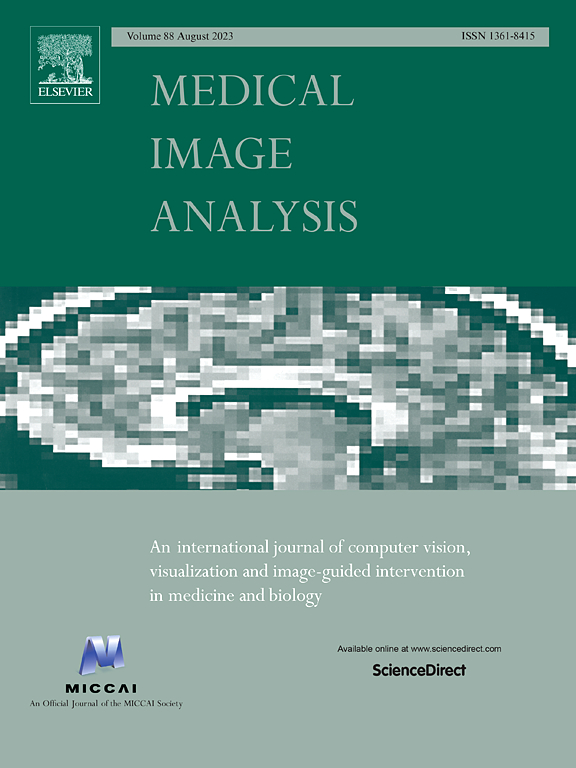From tissue to sound: A new paradigm for medical sonic interaction design
IF 10.7
1区 医学
Q1 COMPUTER SCIENCE, ARTIFICIAL INTELLIGENCE
引用次数: 0
Abstract
Medical imaging maps tissue characteristics into image intensity values, enhancing human perception. However, comprehending this data, especially in high-stakes scenarios such as surgery, is prone to errors. Additionally, current multimodal methods do not fully leverage this valuable data in their design. We introduce “From Tissue to Sound,” a new paradigm for medical sonic interaction design. This paradigm establishes a comprehensive framework for mapping tissue characteristics to auditory displays, providing dynamic and intuitive access to medical images that complement visual data, thereby enhancing multimodal perception. “From Tissue to Sound” provides an advanced and adaptable framework for the interactive sonification of multimodal medical imaging data. This framework employs a physics-based sound model composed of a network of multiple oscillators, whose mechanical properties—such as friction and stiffness—are defined by tissue characteristics extracted from imaging data. This approach enables the representation of anatomical structures and the creation of unique acoustic profiles in response to excitations of the sound model. This method allows users to explore data at a fundamental level, identifying tissue characteristics ranging from rigid to soft, dense to sparse, and structured to scattered. It facilitates intuitive discovery of both general and detailed patterns with minimal preprocessing. Unlike conventional methods that transform low-dimensional data into global sound features through a parametric approach, this method utilizes model-based unsupervised mapping between data and an anatomical sound model, enabling high-dimensional data processing. The versatility of this method is demonstrated through feasibility experiments confirming the generation of perceptually discernible acoustic signals. Furthermore, we present a novel application developed based on this framework for retinal surgery. This new paradigm opens up possibilities for designing multisensory applications for multimodal imaging data. It also facilitates the creation of interactive sonification models with various auditory causality approaches, enhancing both directness and richness.

求助全文
约1分钟内获得全文
求助全文
来源期刊

Medical image analysis
工程技术-工程:生物医学
CiteScore
22.10
自引率
6.40%
发文量
309
审稿时长
6.6 months
期刊介绍:
Medical Image Analysis serves as a platform for sharing new research findings in the realm of medical and biological image analysis, with a focus on applications of computer vision, virtual reality, and robotics to biomedical imaging challenges. The journal prioritizes the publication of high-quality, original papers contributing to the fundamental science of processing, analyzing, and utilizing medical and biological images. It welcomes approaches utilizing biomedical image datasets across all spatial scales, from molecular/cellular imaging to tissue/organ imaging.
 求助内容:
求助内容: 应助结果提醒方式:
应助结果提醒方式:


